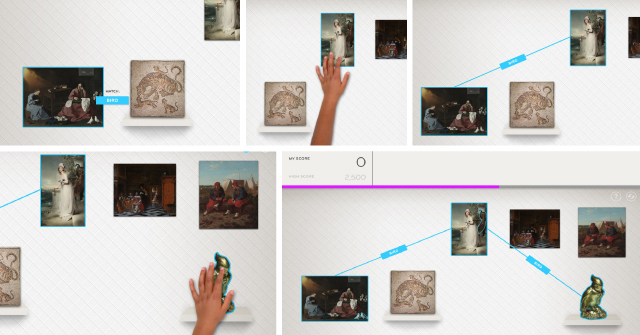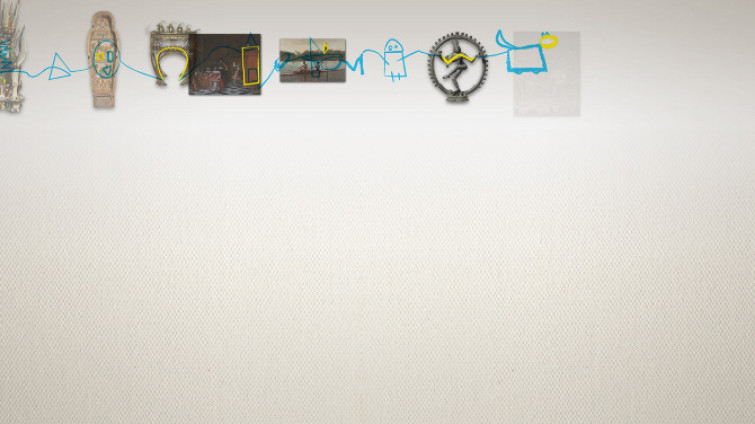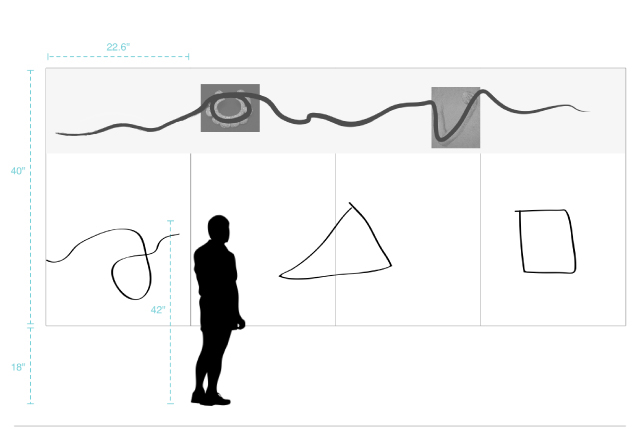Cleveland Museum of Art
Local Projects, 2011.
Interaction Design and Development Intern.
Collaborated in conceptual development, interface design, prototyping and development.
Children live in a highly visual world. Children use objects to explore their physical environment and to make sense of their world. The introduction to art from a younger age not only offers numerous perspectives on the world, but they also provide the advantage of exercising some choice among them and learn to create new meanings through interaction and looking at art. One of the ways to extend the visual experience of children beyond her immediate environment is to introduce them to the world of pictures, starting from picture books to visiting art museum. Planned visits to traditional art museums provide a valuable experience also contributes to growth of aesthetic awareness for preschoolers and young learners.
The activities designed in course of six months tries to bridge this gap and thus providing a chance to emphasize reflection, perception and appreciation as well as production of art piece. Artistic expression and appreciation enables each child to cultivate their ability to express ideas and emotions through art, music, movement, and drama. Visual art can be interacted in broadly four ways. They make it, appreciate it, understand it and make judgments about it (Brandt, 1987/1988). In case of visual arts, the emphasis is on experimenting with art elements in varieties of media to express themselves. Observing diverse pieces and identifying artists’ context, styles and techniques fosters appreciation. A personal connection to art by observing great art works, at an early age not only builds an interest in the arts, it also helps in developing important skills which helps in lifelong learning.
Children may start to relate to the subject or context with more engagement with the images. These experiences will lead them to understand the association of themselves and the world around them. Visual art can be a meaningful way to gain insight into beliefs and values, and it can be a means of transmitting cultural values from one generation to the next (Bennett, 1987/88; Risatti, 1987; Veale, 1992a, 1992b).
In an effort to provide such an experience of benefitting an art education to encompass an expansive view of art, three different art activities were developed – Sorting & matching game, Colour Mix and line and shape. These activities were developed for the Cleveland Museum of Art in collaboration with Local Projects LLC LLC, New York.
Sorting & Matching Game
Sorting & matching game tries to introduce young learners to appreciate visual art, as well as the process of learning from observing the commonalities of themes that are present in various artworks either by material, technique, context or cultural origin. The game tries to prepare children to notice and appreciate the diversity of representations of subject matter that are present in different art-form.
For example in case of portraits, it can represent individuals in many different ways. There can be literal representations of a person or they can represent a person symbolically (to the right). In the first painting of Portrait of Catherine Gray, (fig 1, to the right) the artist has tried portraying a realistic impression of a lady and has paid attention to capturing precise facial features.
But in case of the second painting by Vincent van Gogh, Portrait of Joseph Roulin (1889), (fig.1 to the left) in order to represent a more subjective and symbolic aspect of their subjects, the artist paid less attention to details than to developing new compositional devices, employing non-naturalistic colour and making very specific choices about the background and what it might reveal about the subject.
Prototype video for the Sorting and Matching game:
The working flow of the game
One selects an image, the hint is revealed (1) and then the hunt for the other images starts. And then selects the second matching pair of the theme.(2) When a correct match is made, a line joins these two images indicating it is the correct match. (3) Then the player looks for the last image for the perfect set. (4) Once all three matching images are selected, they are joined by lines and the player scores 100 points. (5)

Animations and interactions designed for the game:
The Sorting and Matching Game set-up at the Cleveland Museum of Art:

Colour Mix Activity
Colour Mix is another interactive installation at the museum, which tries to create a digital stage for children to paint using their hands and without the use of any technical interfaces. Children can use their gestures to create different strokes, lines and textures relating to a variety of interpretive styles and mediums. Mediums like ink, gouache, acrylic or oil and different colours can be selected from the array of cards placed in front of the projected screen. This installation tries to show children how colours are mixed to produce complementary or tertiary colours.
The prototype video of color mixing activity:
Line and Shape Activity
The lines and shape is an interactive installation at the Early Learning zone, in The Cleveland Museum of Art. It is an installation where children and their adult companions can come and explore drawing line and see what their creation can reveal into. The Line & Shape interface is meant to allow children to create a collective infinite line drawing. This installation allows children to view variety of options that can be drawn from their scribbling, also allows them to appreciate the art form they have created.


The height at which the multi-touch screen has to be mounted was decided after considering the anthropometric data of children of age groups 4 to 6 old. As the touch points on screen are placed in the lower half of the screen, the ‘Take of Point’ was based on the ‘access’. Thus starting from 5th percentile (75 cms), considering the 95th percentile the access height was fixed at 84 cms. Thus the screen was placed 50 cms from the floor.
Credits
Principal: Jake Barton. Head of Interaction Designer : Ian Curry. Art Director: Katie Lee. Graphic Designer: Greg Mihalko. Project Directors: Tiya Gordon, Daniel Liss. Graphic Design Intern: Bruno Zalum. Interaction design Intern: Promila Roychoudhury.